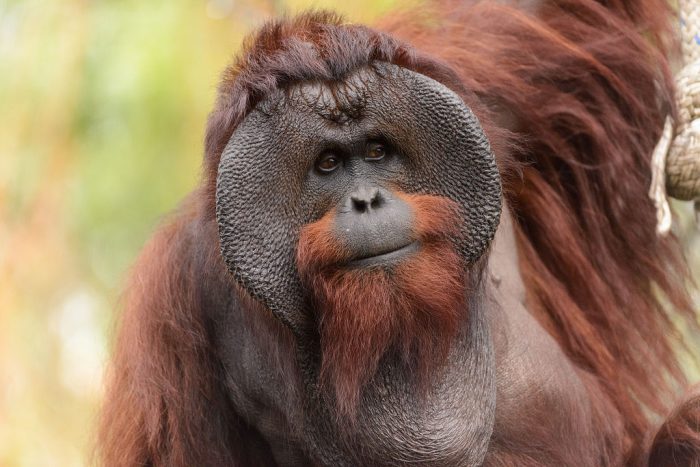Wildfires May Cause Harm to Orangutan Health
Human activity has resulted in an increase of wildfires in Borneo, which may cause long-term health problems for endangered orangutans due to smoke inhalation.
 Image: By Eric Kilby from Somerville, MA, USA (Male Bornean Orangutan - Big Cheeks) [CC BY-SA 2.0 (http://creativecommons.org/licenses/by-sa/2.0)], via Wikimedia Commons
Image: By Eric Kilby from Somerville, MA, USA (Male Bornean Orangutan - Big Cheeks) [CC BY-SA 2.0 (http://creativecommons.org/licenses/by-sa/2.0)], via Wikimedia Commons Orangutans, already critically endangered due to habitat loss from logging and large-scale farming, may face another threat in the form of smoke from natural and human-caused fires. The results of this new research study appears in the journal Scientific Reports.
The research came about after Wendy Erb, a postdoctoral researcher at Rutgers University, was studying male orangutans in the forests of Indonesian Borneo in 2015 when fires started. She and her colleagues at the Tuanan Orangutan Research Station continued working until they had to stop and help fight the blazes, which occur annually, often due to smallholder farmers and plantations clearing forests to plant crops.
A few weeks into the fire season, Erb noticed a difference in the sound of the males’ “long call,” which scientists believe is used to attract females and warn other males. “I thought they sounded raggedy, a little like humans who smoke a lot,” she said.
This prompted Erb to find out if the smoke the orangutans inhaled during the fires had affected their health. Humans who inhale smoke suffer ill effects, but she knew of no studies on the possible effects on orangutans.
Erb studied four “flanged” males, who weigh about 200 pounds and have large cheek pads. She awoke each day before dawn to collect their urine in a bag at the end of a stick she held below them. By analysing their behaviour and urine, the scientists discovered the big males travelled less, rested more and consumed more calories. They also produced more ketone bodies, which are molecules made by the liver from fatty acids during periods of low food intake. This was unexpected because the apes were eating more, not less. However, the question of why they were burning fat remained.
The only new element in the orangutans’ lives was the three months of fire and smoke. The forests’ natural surface consists of peat, which is flammable, allowing the fires to burn underground for weeks.
Soil analyses suggest that wildfires have become increasingly frequent and intense in recent decades due to deforestation and the draining of peatlands. In 2015, Indonesia experienced the most severe fire activity and smoke pollution on record since the disastrous wildfires during the 1997 El Niño droughts burned some 24,000 square kilometres of peatlands (12% of the total peat area). Peatland fires destroy forest habitats, release greenhouse gases and produce hazardous particulate matter, the leading cause of worldwide pollution-related mortality. There has been very little research into the effects on wildlife populations inhabiting these burning habitats.
The unexpected loss of nearly 100,000 Bornean orangutans from intact forests in Kalimantan between 1999 and 2015 indicates that habitat loss alone is not driving this critically endangered species’ declines. Increasingly frequent exposure to toxic smoke could have severe consequences for orangutans, other animals and people, and this research highlights the urgent need to understand the long-term and indirect impacts of Indonesia’s peatland fires, beyond the immediate loss of forests and their inhabitants.
Professor Erin Vogel, co-author of the study says the next step is to analyse data from female and juvenile orangutans to see how the fires affected their health. “We’ll look at different indicators of inflammation in the urine. We’ll look for cytokines, proteins that are part of the immune response, and cortisol, a hormone associated with stress. It’s possible these males are burning fat because their energy is going to repairing tissue.”





Sorry, comments are closed on this post